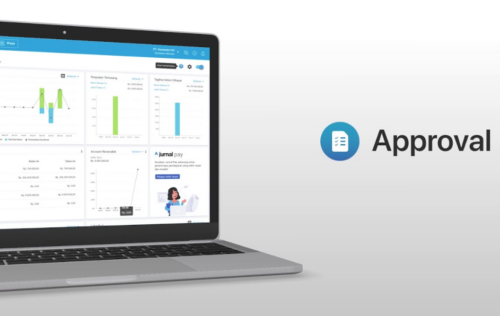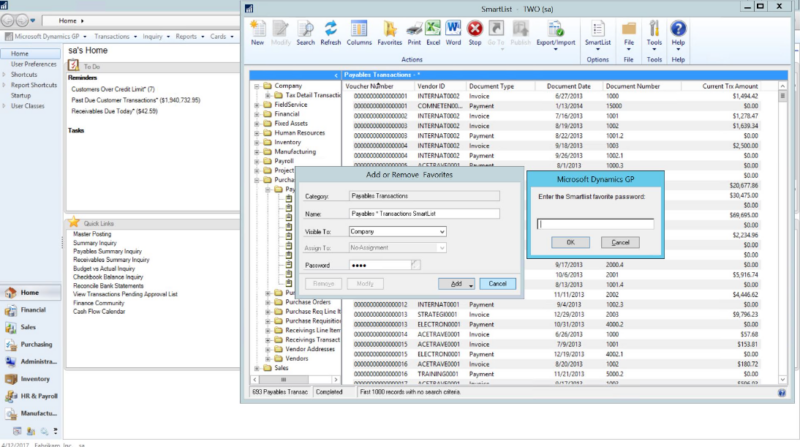Optimize operations with cutting-edge MRP software for efficient production and inventory management. Elevate your business with smart solutions.
In today’s fast-paced business landscape, maximizing productivity and efficiency is crucial for staying competitive. Manufacturers, in particular, face the challenge of optimizing their operations to meet market demands while maintaining quality standards.
One solution that has gained prominence in recent years is Material Requirements Planning (MRP) software. In this comprehensive guide, we will explore the world of MRP software solutions and how they can significantly enhance productivity for manufacturers.
Introduction to MRP Software
What is MRP?
Material Requirements Planning (MRP) is a systematic approach to managing a company’s manufacturing and inventory needs. It involves the calculation of what materials are required, in what quantities, and at what time to ensure the production process operates smoothly.
The Role of MRP in Manufacturing
MRP plays a pivotal role in helping manufacturers maintain optimal inventory levels, reduce production costs, and meet customer demands efficiently. It acts as the backbone of modern manufacturing operations.
Evolution of MRP
– From Manual Systems to Digital Solutions
Historically, MRP was a manual process that relied on spreadsheets and paper-based records. However, with advancements in technology, digital MRP solutions have become the industry standard.
The transition from manual systems to digital solutions marks a significant milestone in the evolution of manufacturing and business operations. In this section, we will explore this transformation and understand how it has revolutionized various industries.
The Era of Manual Systems
Before the advent of digital solutions, most businesses, including manufacturing, relied heavily on manual systems and processes. This era was characterized by:
1. Paper-Based Records
Records of inventory, production schedules, and customer orders were maintained on paper. This manual record-keeping was not only time-consuming but also prone to errors.
2. Manual Calculations
Calculations related to material requirements, production planning, and inventory management were done manually. This often led to inefficiencies and inaccuracies.
3. Lack of Real-Time Information
One of the most significant limitations of manual systems was the absence of real-time data. Businesses had to rely on periodic updates, which hindered quick decision-making.
4. Limited Connectivity
Communication between different departments and even with suppliers and customers was primarily done through traditional means such as phone calls, faxes, and physical mail. This lack of connectivity slowed down processes.
The Digital Revolution
The transition from manual systems to digital solutions began with the introduction of computers and software designed to streamline business operations. This revolution brought about several transformative changes:
1. Automation
Digital solutions automate various tasks, eliminating the need for manual calculations and record-keeping. This automation significantly reduces the risk of errors and improves efficiency.
2. Real-Time Data
With digital systems, businesses gained access to real-time data. This means that decision-makers could now make informed choices based on the most up-to-date information available.
3. Improved Connectivity
Digital solutions enable seamless communication within and between organizations. Email, instant messaging, and collaboration tools have made it easier to coordinate activities across departments and with external partners.
4. Data Analysis and Reporting
Digital solutions provide powerful tools for data analysis and reporting. Businesses can now gain insights into their operations, identify trends, and make data-driven decisions.
Impact on Manufacturing
The shift to digital solutions has had a profound impact on the manufacturing sector:
1. Enhanced Efficiency
Manufacturers can now optimize production schedules, manage inventory more effectively, and reduce downtime. This translates to higher productivity and cost savings.
2. Improved Quality Control
Digital systems enable better tracking and monitoring of the production process, leading to improved quality control and fewer defects in finished products.
3. Supply Chain Management
Digital solutions have revolutionized supply chain management, allowing for better coordination with suppliers and customers, leading to smoother operations and reduced lead times.
4. Innovation
Digitalization has paved the way for innovation in manufacturing, with technologies like 3D printing, IoT (Internet of Things), and AI (Artificial Intelligence) being integrated into production processes.
– Benefits of Modern MRP Software
Modern MRP software offers numerous advantages, including real-time data analysis, improved decision-making, and enhanced collaboration among various departments within a manufacturing organization.
In the next section, we will explore the key features of MRP software in greater detail.
Modern Material Requirements Planning (MRP) software offers a wide range of benefits to manufacturers and businesses. In this section, we will explore the advantages of adopting these advanced digital solutions for managing manufacturing operations.
1. Enhanced Efficiency
Modern MRP software is designed to automate and optimize various tasks, such as inventory management, production planning, and order tracking. This automation reduces manual work, minimizes errors, and streamlines processes, leading to enhanced overall efficiency.
2. Real-Time Data Insights
One of the most significant advantages of modern MRP software is its ability to provide real-time data insights. Businesses can access up-to-the-minute information about inventory levels, production progress, and order statuses. This real-time visibility empowers decision-makers to make informed choices promptly.
3. Accurate Demand Forecasting
Modern MRP software incorporates sophisticated algorithms and data analytics to forecast demand accurately. This capability ensures that manufacturers produce the right quantity of products to meet market demand without overstocking or understocking.
4. Optimized Production Scheduling
Efficient production scheduling is crucial for meeting customer demands while minimizing downtime. Modern MRP software uses advanced algorithms to create optimized production schedules, taking into account resource availability and order priorities.
5. Improved Collaboration
Collaboration among different departments within a manufacturing organization is vital for smooth operations. Modern MRP software often includes collaboration tools that allow teams to communicate and share information seamlessly, reducing silos and enhancing teamwork.
6. Reduced Inventory Costs
By optimizing inventory levels and preventing overstocking or stockouts, modern MRP software helps reduce carrying costs associated with excess inventory. This results in significant cost savings for businesses.
7. Enhanced Accuracy
Automation and data-driven decision-making improve accuracy in production planning and inventory management. This reduces the risk of errors that can lead to production delays or customer dissatisfaction.
8. Improved Customer Service
Meeting customer demands promptly and efficiently is essential for maintaining customer satisfaction. Modern MRP software helps ensure that orders are fulfilled on time, leading to happier customers and potentially repeat business.
9. Effective Supplier Relationship Management
Modern MRP software often includes supplier relationship management features. This allows businesses to track supplier performance, monitor deliveries, and maintain strong relationships with key suppliers.
10. Cost Reduction
Overall, modern MRP software contributes to cost reduction in multiple ways, including reduced labor costs due to automation, minimized carrying costs, and better resource utilization.
11. Scalability
Many modern MRP software solutions are scalable, meaning they can grow with your business. Whether you are a small manufacturer or a large enterprise, you can tailor the software to your needs.
12. Data Security
Modern MRP software typically includes robust security features to protect sensitive manufacturing data. This ensures the confidentiality and integrity of your business-critical information.
13. Compliance and Reporting
Advanced MRP software often includes features for compliance management and reporting. This is particularly important for industries with strict regulatory requirements.
Key Features of MRP Software
– Inventory Management
MRP software helps manufacturers maintain optimal inventory levels by tracking the usage of raw materials and finished products.
– Production Scheduling
Efficient production scheduling is crucial to meeting customer demands while minimizing downtime. MRP software streamlines this process by optimizing production plans.
– Demand Forecasting
Accurate demand forecasting ensures that manufacturers produce the right quantity of products to meet market demand without overstocking.
– Supplier Relationship Management
Managing supplier relationships is simplified through MRP software, as it helps track supplier performance and ensures timely deliveries.
How MRP Software Works
– Data Input and Analysis
MRP software begins by collecting data on current inventory levels, pending orders, and production capacity.
– Generating Material Plans
Based on the input data, the software generates material plans that outline what materials need to be ordered and when.
– Execution and Monitoring
The execution phase involves placing orders, tracking deliveries, and monitoring production progress to ensure everything is on schedule.
In the following sections, we will explore the benefits of implementing MRP software and the challenges associated with its implementation.
Benefits of Implementing MRP Software
– Increased Efficiency
Implementing MRP software streamlines operations, reducing manual work and the risk of errors.
– Reduced Inventory Costs
By optimizing inventory levels, MRP software helps manufacturers reduce carrying costs and minimize waste.
– Enhanced Accuracy
Automation and data-driven decision-making improve accuracy in production planning and inventory management.
– Improved Customer Service
Meeting customer demands promptly and efficiently leads to higher customer satisfaction levels.
Choosing the Right MRP Software
– Considerations for Selection
Selecting the right MRP software involves assessing your company’s unique needs, budget constraints, and scalability requirements.
– Case Studies: Successful Implementations
Exploring real-world examples of successful MRP software implementations can provide valuable insights into the selection process.
Challenges in Implementing MRP Software
– Data Integration Issues
Integrating MRP software with existing systems can pose challenges, but careful planning can mitigate these issues.
– Employee Training
Proper training is essential to ensure that employees can use the software effectively.
– Change Management
Implementing MRP software often requires changes in workflows and processes, which can be met with resistance. Effective change management strategies are vital. In the next section, we will discuss future trends in MRP software.
Future Trends in MRP Software
– AI and Machine Learning Integration
The integration of artificial intelligence and machine learning in MRP software is poised to revolutionize the manufacturing industry by enabling predictive analytics and automated decision-making.
– Cloud-Based MRP Solutions
Cloud-based MRP solutions offer flexibility, scalability, and remote access, making them increasingly popular among manufacturers.
– Sustainability and Green Manufacturing
As environmental concerns grow, MRP software is evolving to support sustainable practices and green manufacturing initiatives.
Success Stories: Real-World Examples
– Company A: Streamlined Production with MRP
Company A’s implementation of MRP software resulted in a 20% increase in production efficiency within six months.
– Company B: Inventory Optimization
Company B reduced its inventory carrying costs by 15% while maintaining on-time deliveries after adopting MRP software.
In the following sections, we will explore the financial aspects of MRP software and provide a step-by-step guide to its implementation.
ROI of MRP Software
– Calculating Return on Investment
Understanding the financial benefits of MRP software is essential. Calculating ROI helps businesses assess the software’s long-term value.
– Long-term Benefits
MRP software provides not only immediate improvements but also long-term benefits such as improved competitiveness and adaptability.
Implementing MRP Software: Step-by-Step Guide
– Assessing Current Processes
Before implementing MRP software, it’s crucial to evaluate current processes and identify areas that need improvement.
– Vendor Selection
Choosing the right software vendor is a critical step. Consider factors such as reputation, support, and compatibility.
– Implementation Strategy
Developing a well-thought-out implementation plan ensures a smooth transition to MRP software.
In the next section, we will compare MRP software with ERP software to help businesses make informed decisions.
MRP Software vs. ERP Software
– Key Differences
While both MRP and ERP software aim to improve operations, they serve different purposes and have distinct features.
– When to Choose Each
Understanding the specific needs of your business will help you decide whether MRP or ERP software is the better fit.
MRP Software in a Global Context
– International Supply Chains
For companies operating in a global market, MRP software helps manage complex international supply chains.
– Cultural Considerations
Adapting MRP software to different cultural contexts requires sensitivity and customization.
Frequently Asked Questions
1. What is the primary purpose of MRP software?
MRP software’s primary purpose is to optimize material planning and inventory management for manufacturing companies, ensuring the efficient use of resources.
2. How can MRP software benefit small manufacturers?
Small manufacturers can benefit from MRP software by reducing inventory costs, improving production efficiency, and enhancing their ability to meet customer demands.
3. Is MRP software suitable for global companies with complex supply chains?
Yes, MRP software is well-suited for global companies as it helps manage complex international supply chains and optimize operations on a global scale.
4. What should businesses consider when choosing an MRP software vendor?
When choosing an MRP software vendor, businesses should consider factors such as the vendor’s reputation, customer support, compatibility with existing systems, and scalability.
5. How does MRP software contribute to sustainability and green manufacturing?
MRP software can contribute to sustainability by optimizing resource use, reducing waste, and supporting green manufacturing practices.
Conclusion
In conclusion, Material Requirements Planning (MRP) software is a powerful tool that can significantly boost productivity and efficiency in manufacturing. From automating inventory management to optimizing production schedules, MRP software plays a pivotal role in streamlining operations.
By embracing the latest trends, addressing challenges, and learning from success stories, manufacturers can harness the full potential of MRP software to stay competitive in an ever-evolving industry.


